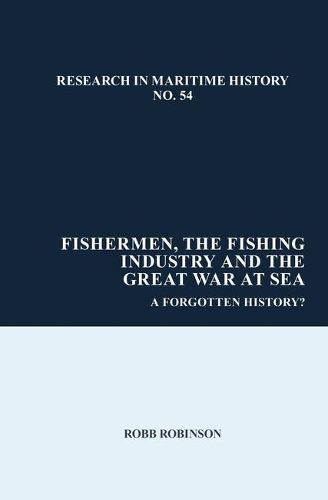Readings Newsletter
Become a Readings Member to make your shopping experience even easier.
Sign in or sign up for free!
You’re not far away from qualifying for FREE standard shipping within Australia
You’ve qualified for FREE standard shipping within Australia
The cart is loading…






Recent discussion, academic publications and many of the national exhibitions relating to the Great War at sea have focussed on capital ships, Jutland and perhaps U-boats. Very little has been published about the crucial role played by fishermen, fishing vessels and coastal communities all round the British Isles. Yet fishermen and armed fishing craft were continually on the maritime front line throughout the conflict; they formed the backbone of the Auxiliary Patrol and were in constant action against-U-boats or engaged on unrelenting minesweeping duties. Approximately 3000 fishing vessels were requisitioned and armed by the Admiralty and more than 39,000 fishermen joined the Trawler Section of the Royal Naval Reserve. The class and cultural gap between working fishermen and many RN officers was enormous. This book examines the multifaceted role that fishermen and the fish trade played throughout the conflict. It examines the reasons why, in an age of dreadnoughts and other high-tech military equipment, so many fishermen and fishing vessels were called upon to play such a crucial role in the littoral war against mines and U-boats, not only around the British Isles but also off the coasts of various other theatres of war. It will analyse the nature of the fishing industry’s war-time involvement and also the contribution that non-belligerent fishing vessels continued to play in maintaining the beleaguered nation’s food supplies.
$9.00 standard shipping within Australia
FREE standard shipping within Australia for orders over $100.00
Express & International shipping calculated at checkout
Recent discussion, academic publications and many of the national exhibitions relating to the Great War at sea have focussed on capital ships, Jutland and perhaps U-boats. Very little has been published about the crucial role played by fishermen, fishing vessels and coastal communities all round the British Isles. Yet fishermen and armed fishing craft were continually on the maritime front line throughout the conflict; they formed the backbone of the Auxiliary Patrol and were in constant action against-U-boats or engaged on unrelenting minesweeping duties. Approximately 3000 fishing vessels were requisitioned and armed by the Admiralty and more than 39,000 fishermen joined the Trawler Section of the Royal Naval Reserve. The class and cultural gap between working fishermen and many RN officers was enormous. This book examines the multifaceted role that fishermen and the fish trade played throughout the conflict. It examines the reasons why, in an age of dreadnoughts and other high-tech military equipment, so many fishermen and fishing vessels were called upon to play such a crucial role in the littoral war against mines and U-boats, not only around the British Isles but also off the coasts of various other theatres of war. It will analyse the nature of the fishing industry’s war-time involvement and also the contribution that non-belligerent fishing vessels continued to play in maintaining the beleaguered nation’s food supplies.